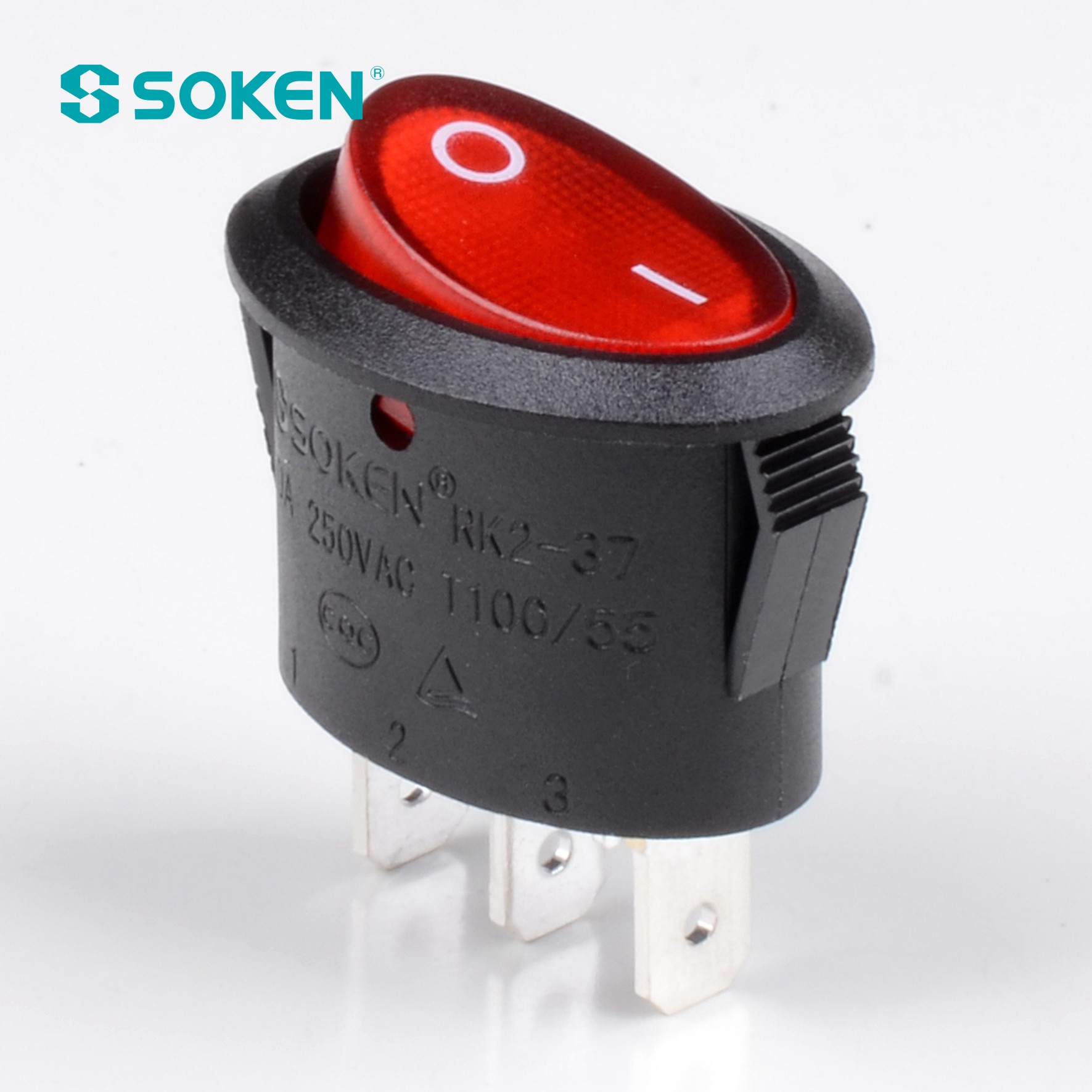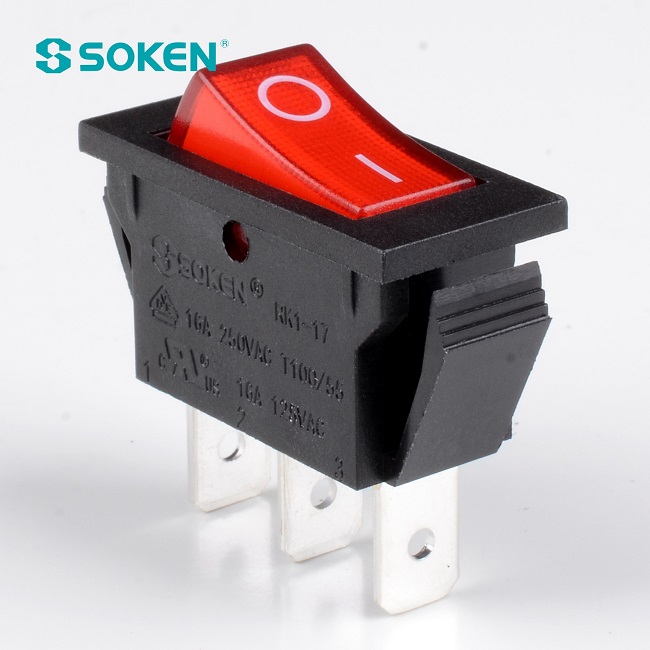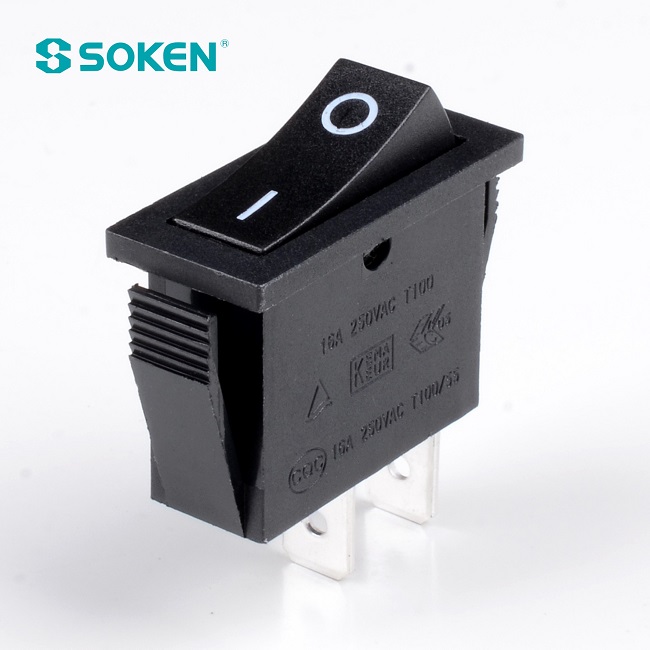 Switches play a vital role in controlling electrical circuits. A rocker switch, known for its flat and modern design, operates differently from other types of switches. Its unique mechanism and appearance make it a popular choice in homes and industries, offering both functionality and aesthetic appeal.
Switches play a vital role in controlling electrical circuits. A rocker switch, known for its flat and modern design, operates differently from other types of switches. Its unique mechanism and appearance make it a popular choice in homes and industries, offering both functionality and aesthetic appeal.
Key Takeaways
- Rocker switches have a flat, modern look and are simple to use. They work well for home devices and smart systems.
- Toggle switches have a lever that you can feel move. This makes them good for factories and strong machines.
- Rocker switches are easier to install because they snap in place. Toggle switches need more careful wiring and setup.
Functional Differences Between Rocker and Toggle Switches
How Rocker Switches Operate
A rocker switch functions by tilting a flat, rectangular actuator back and forth to open or close an electrical circuit. When pressed on one side, the switch completes the circuit, allowing current to flow. Pressing the opposite side breaks the circuit, halting the flow of electricity. This design provides a smooth and quiet operation, making it ideal for environments where noise reduction is important. Rocker switches often include visual indicators, such as illuminated panels, to signal their on/off status. These features enhance usability and make them a preferred choice for modern appliances and home automation systems.
How Toggle Switches Operate
A toggle switch operates through a lever mechanism that moves up or down to control the circuit. The lever, often made of metal or durable plastic, provides tactile feedback, ensuring users can feel when the switch changes position. Toggle switches are known for their reliability and simplicity, making them suitable for industrial applications and heavy-duty equipment. Unlike rocker switches, toggle switches typically lack built-in illumination, but their straightforward design compensates with durability and ease of use.
Wiring and Electrical Considerations
Both rocker and toggle switches require proper wiring to function effectively. Rocker switches often feature a snap-in design, simplifying installation in panels or enclosures. They are compatible with low-voltage and high-voltage systems, depending on the model. Toggle switches, on the other hand, may require screw terminals or soldering for secure connections. Their robust construction allows them to handle higher electrical loads, making them suitable for demanding applications. Ensuring compatibility with the intended electrical system is crucial when selecting either type of switch.
Usability and Practicality
Ease of Use
Rocker switches and toggle switches differ significantly in terms of user experience. Rocker switches offer a flat surface that users can press with minimal effort. This design makes them intuitive and accessible, especially for individuals with limited dexterity. The smooth operation of a rocker switch ensures a seamless interaction, making it a preferred choice for modern appliances. Toggle switches, on the other hand, provide tactile feedback through their lever mechanism. Users can feel the switch engage, which adds a layer of assurance during operation. While both types are easy to use, the choice often depends on personal preference and the specific application.
Durability and Reliability
Both rocker and toggle switches are designed for long-term use, but their durability varies based on construction and materials. Rocker switches often feature a robust plastic housing that resists wear and tear, making them suitable for frequent use. Toggle switches, with their metal or reinforced plastic levers, excel in heavy-duty environments. They can withstand higher mechanical stress, making them reliable for industrial applications. Proper maintenance and adherence to manufacturer guidelines further enhance the lifespan of both switch types.
Applications in Homes and Industries
Rocker switches are commonly found in household appliances, such as coffee makers and washing machines, due to their sleek design and ease of use. They also play a vital role in home automation systems, where aesthetics and functionality are key. Toggle switches, however, dominate industrial settings. Their rugged construction makes them ideal for controlling machinery, vehicles, and other equipment requiring high reliability. Both switches serve distinct purposes, catering to the unique demands of residential and industrial environments.
Aesthetic and Design Differences
Appearance of Rocker Switches
Rocker switches feature a sleek and modern design. Their flat, rectangular surface creates a minimalist look that blends seamlessly with contemporary interiors. The actuator tilts gently, offering a smooth and quiet operation. Many models include illuminated indicators, which enhance their visual appeal while providing functional benefits. These lights often glow softly, signaling the switch’s status even in low-light conditions. The clean lines and polished finish of rocker switches make them a popular choice for home automation systems and modern appliances.
Appearance of Toggle Switches
Toggle switches exhibit a more traditional and utilitarian design. Their lever mechanism, often protruding from the base, gives them a distinctive and classic appearance. The lever can be made of metal or durable plastic, with finishes ranging from matte to polished. This design emphasizes functionality over aesthetics, making toggle switches a staple in industrial and mechanical settings. Despite their simplicity, toggle switches exude a timeless charm that appeals to those who prefer a retro or rugged look.
Matching Switches to Interior Styles
Choosing the right switch depends on the desired interior style. Rocker switches complement modern and minimalist spaces due to their streamlined design and subtle presence. They pair well with sleek furniture, neutral color palettes, and smart home systems. Toggle switches, on the other hand, suit vintage or industrial-themed interiors. Their bold and mechanical appearance adds character to spaces with exposed brick walls, metal accents, or rustic decor. Understanding the aesthetic qualities of each switch type helps homeowners and designers achieve a cohesive look.
Cost and Affordability
Price Range of Rocker Switches
Rocker switches are available in a wide price range, catering to different budgets and applications. Basic models, often used in household appliances, typically cost between $1 and $5 per unit. These switches provide essential functionality without additional features. Mid-range options, priced around $5 to $15, may include illuminated indicators or enhanced durability. High-end rocker switches, designed for specialized applications or premium aesthetics, can exceed $20 per unit. The price variation reflects differences in materials, design, and additional features.
Price Range of Toggle Switches
Toggle switches also span a broad price spectrum. Entry-level models, commonly used in simple circuits, start at approximately $1 to $3 per unit. These switches are economical and reliable for basic needs. Mid-tier options, priced between $5 and $10, often feature improved construction and higher load capacities. Industrial-grade toggle switches, built for demanding environments, can cost $15 or more. The pricing depends on factors such as material quality, load rating, and intended use.
Factors Influencing Cost
Several factors affect the cost of both rocker and toggle switches. Material quality plays a significant role, with metal components generally costing more than plastic ones. Additional features, such as illumination or waterproofing, increase the price. The manufacturing process and brand reputation also contribute to cost differences. Bulk purchasing often reduces the per-unit price, making it a cost-effective option for large-scale projects. Buyers should consider these factors to select a switch that balances quality and affordability.
Installation and Maintenance
Installing Rocker Switches
Installing a rocker switch involves a straightforward process. Users should begin by identifying the correct wiring diagram for the specific switch model. This ensures compatibility with the electrical system. Most rocker switches feature a snap-in design, which simplifies mounting into panels or enclosures. To install, users must first cut an appropriately sized hole in the panel. After connecting the wires to the terminals, the switch can be pushed into place until it clicks securely. Proper insulation of the wires is essential to prevent electrical hazards. For illuminated models, additional wiring may be required to power the indicator light.
Installing Toggle Switches
Toggle switch installation requires careful attention to wiring and mounting. These switches often use screw terminals or soldered connections. Users should start by stripping the wire ends and securing them to the terminals according to the wiring diagram. A drill or cutting tool may be needed to create a mounting hole that matches the switch’s dimensions. Once the wires are connected, the toggle switch can be fastened to the panel using screws or a locking nut. Ensuring a tight fit prevents movement during operation. Testing the switch after installation verifies proper functionality.
Maintenance and Replacement Tips
Regular maintenance extends the lifespan of both rocker and toggle switches. Cleaning the switch surface with a dry cloth removes dust and debris. Inspecting the wiring for signs of wear or damage ensures safe operation. If a switch becomes unresponsive or shows signs of malfunction, replacement is recommended. Users should disconnect power before removing the old switch and installing a new one. Choosing a high-quality replacement ensures durability and reliability. Following manufacturer guidelines during maintenance and replacement enhances performance and safety.
Rocker switches and toggle switches cater to different preferences and applications. Rocker switches offer a sleek, modern design and user-friendly operation, making them ideal for contemporary settings. Toggle switches provide a classic appearance and tactile feedback, excelling in industrial environments. Selecting the right switch depends on individual requirements, including functionality, aesthetics, and budget considerations.
FAQ
1. What are the key differences between rocker and toggle switches?
Rocker switches have a flat actuator and modern design, while toggle switches use a lever mechanism and offer a classic appearance. Each suits different applications and aesthetic preferences.
2. Can rocker and toggle switches handle the same electrical loads?
Toggle switches typically handle higher electrical loads due to their robust construction. Rocker switches are versatile but may require specific models for heavy-duty applications.
3. Which switch type is easier to install?
Rocker switches often feature a snap-in design, simplifying installation. Toggle switches may require screw terminals or soldering, making them slightly more complex to install.
Tip: Always consult the wiring diagram and follow safety guidelines during installation.
Post time: Feb-03-2025


